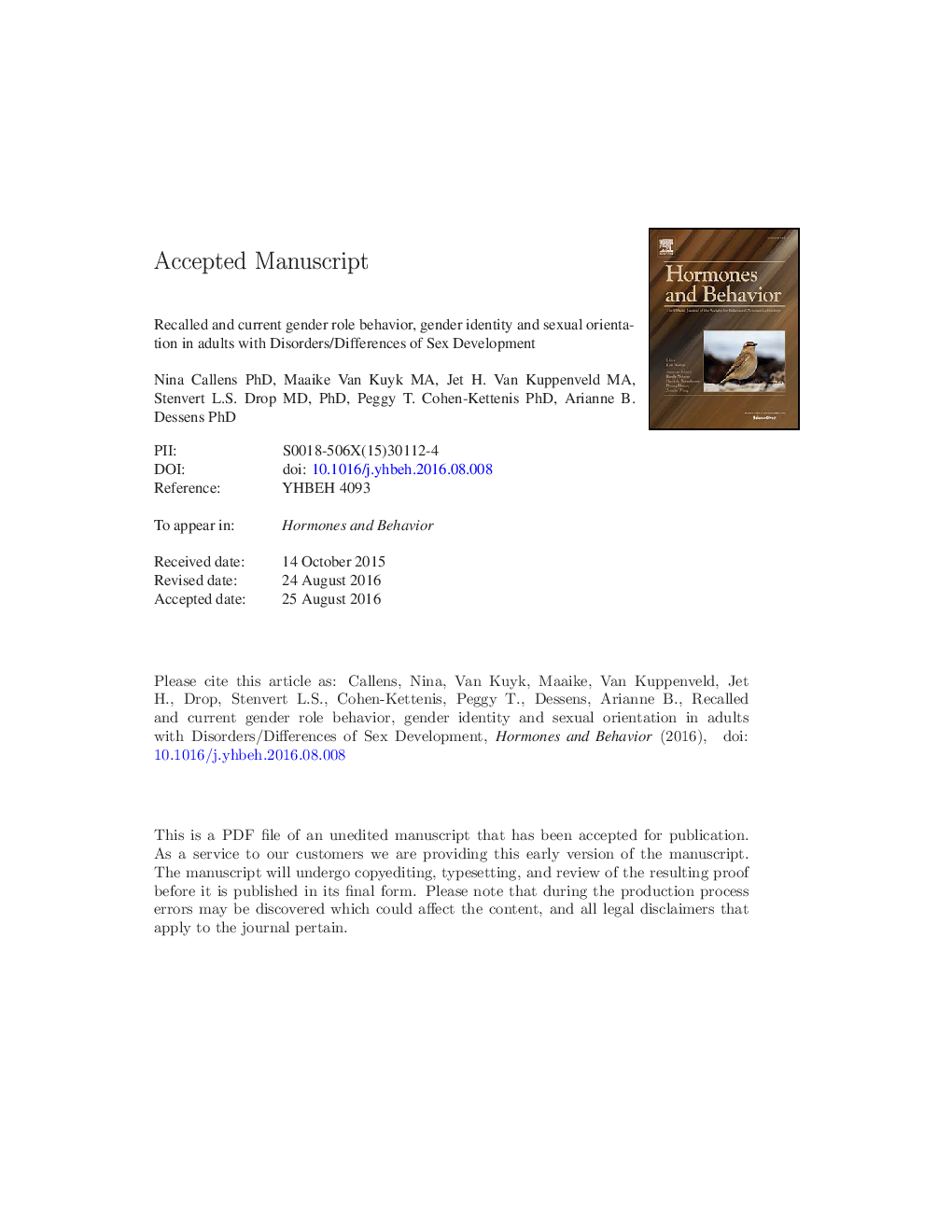| کد مقاله | کد نشریه | سال انتشار | مقاله انگلیسی | نسخه تمام متن |
|---|---|---|---|---|
| 4931241 | 1432754 | 2016 | 52 صفحه PDF | دانلود رایگان |
عنوان انگلیسی مقاله ISI
Recalled and current gender role behavior, gender identity and sexual orientation in adults with Disorders/Differences of Sex Development
ترجمه فارسی عنوان
رفتار جنسی نقش جنسیتی، هویت جنسیتی و گرایش جنسی در بزرگسالان مبتلا به اختلالات / اختلافات جنسیتی را یادآوری می کند
دانلود مقاله + سفارش ترجمه
دانلود مقاله ISI انگلیسی
رایگان برای ایرانیان
کلمات کلیدی
موضوعات مرتبط
علوم زیستی و بیوفناوری
بیوشیمی، ژنتیک و زیست شناسی مولکولی
علوم غدد
چکیده انگلیسی
The magnitude of sex differences in human brain and behavior and the respective contributions of biology versus socialization remain a topic of ongoing study in science. The preponderance of evidence attests to the notion that sexual differentiation processes are at least partially hormonally mediated, with high levels of prenatal androgens facilitating male-typed and inhibiting female-typed behaviors. In individuals with Disorders/Differences of Sex Development (DSD), hormonal profiles or sensitivities have been altered due to genetic influences, presumably affecting gender(ed) activity interests as well as gender identity development in a minority of the affected population. While continued postnatal androgen exposure in a number of DSD syndromes has been associated with higher rates of gender dysphoria and gender change, the role of a number of mediating and moderating factors, such as initial gender assignment, syndrome severity and clinical management remains largely unclear. Limited investigations of the associations between these identified influences and gendered development outcomes impede optimization of clinical care. Participants with DSD (n = 123), recruited in the context of a Dutch multi-center follow-up audit, were divided in subgroups reflecting prenatal androgen exposure, genital appearance at birth and gender of rearing. Recalled childhood play and playmate preferences, gender identity and sexual orientation were measured with questionnaires and semi-structured interviews. Data were compared to those of control male (n = 46) and female participants (n = 79). The findings support that (a) prenatal androgen exposure has large effects on (gendered) activity interests, but to a much lesser extent on sexual orientation and that (b) initial gender of rearing remains a better predictor of gender identity contentedness than prenatal androgen exposure, beyond syndrome severity and medical treatment influences. Nonetheless, 3.3% of individuals with DSD in our sample self-reported gender dysphoria from an early age and changed gender, which further underlines the need for thorough long- term follow-up and specific clinical support.
ناشر
Database: Elsevier - ScienceDirect (ساینس دایرکت)
Journal: Hormones and Behavior - Volume 86, November 2016, Pages 8-20
Journal: Hormones and Behavior - Volume 86, November 2016, Pages 8-20
نویسندگان
Nina PhD, Maaike MA, Jet H. MA, Stenvert L.S. MD, PhD, Peggy T. PhD, Arianne B. PhD, Dutch Study Group on DSD Dutch Study Group on DSD,
